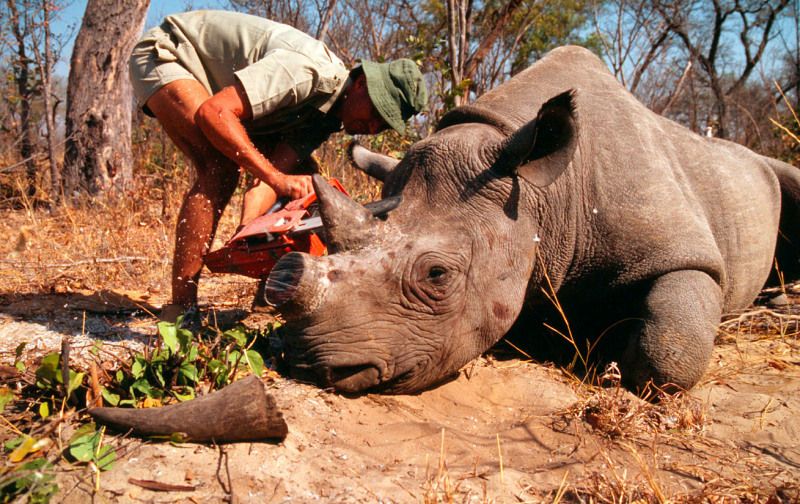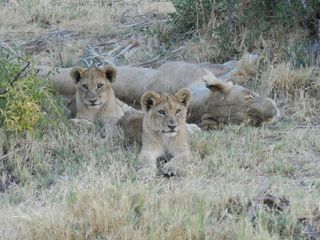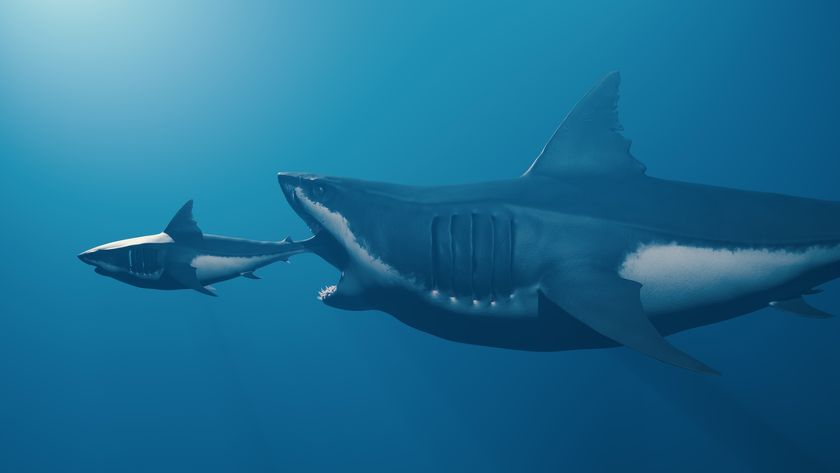
7 Iconic Animals Humans Are Driving to Extinction

It's hard to imagine a world in which elephants, orangutans, lions and other iconic wildlife only exist in stories, photos and zoos. But that may be where the future is heading for some of these animals. Several creatures around the world are being pushed toward extinction by humans, through hunting and habitat loss, researchers say.
Growing populations of humans, and rising demand for agricultural products and the animals themselves via poaching, are elbowing these iconic animals to the brink. This stark reality has become even more palpable since the United Nations issued a report this summer estimating that the global population will reach 11 billion by 2100, faster than previously estimated. If these animals are to be saved, people will need to be educated about the creatures' plight, poaching must be stopped, and the animals' habitats will need to be protected, experts say.
Below, are seven animals that humans are threatening with extinction. These are just a few examples of how humans are contributing to the sixth-largest mass extinction in the history of the planet, according to most biologists. [What 11 Billion People Mean for Earth's Animals]
Lions
There are only about 20,000 lions left in Africa, according to Dereck Joubert, a National Geographic explorer-in-residence and filmmaker who lives among the iconic big cats in Botswana with his wife, Beverly. About 50 years ago, there were 450,000 lions — a decline of more than 95 percent, he said. About five wild lions are killed every day throughout Africa, Joubert added.

Trophy hunters, mostly Americans, kill about 600 lions per year, typically males with large manes. More than 90 percent of these trophies are taken back to the United States and the activity often takes place in "canned" hunts where lions are placed in small enclosures or even cages and then shot, Joubert added. Joubert and his wife chronicle the plight of these sought-after male lions in a new film entitled "Game of Lions," airing on Nat Geo Wild at 10 p.m. ET on Dec. 1.
Leopards
Sign up for the Live Science daily newsletter now
Get the world’s most fascinating discoveries delivered straight to your inbox.
Leopards have also declined by a similar magnitude, Joubert said. About 50 years ago there were 700,000 leopards, and today there are closer to 50,000. Leopards are hunted for their beautiful coats, which help to disguise them. About 5,000 leopards are killed each year, he added.
Orangutans
In Borneo and Sumatra, large companies are destroying forests and replacing them with big swaths of palm tree monocultures (plots where only one plant is grown, which don't provide suitable habitat for most animals), threatening the future existence of orangutans, said Lee Hannah, a senior fellow in climate change biology at Conservation International, a global group devoted to saving endangered animals and their habitats. There are only about 6,000 wild orangutans left, and about 1,000 are being killed each year, primarily from habitat destruction, according to the Orangutan Project, an environmental group whose mission is to save the animals.
Rhinos
Rhino poaching has more than doubled since 2010 in South Africa, according to the country. And this year, rhinos went extinct in the adjacent country of Mozambique, according to news reports. One rhino is shot in Africa every 9.5 hours, Joubert said.
Rhinos are desired for their horns, which are wrongly thought to be able to cure cancer and fevers, Joubert added. Horns can sell for around $30,000 per pound ($65,000 per kilogram), according to the BBC. [Black Market Horns: Images from a Rhino Bust]
Elephants
Elephants are in trouble, according to conservationists. Poaching of elephants has risen dramatically in the past few years due to soaring demand for ivory, primarily in China and Southeast Asia. Five African elephants are killed every hour, Joubert said.
There are a total of about 300,000 African elephants left, and as many as 40,000 are killed each year. With these levels, elephants won't be around for much longer, Joubert said.
Lemurs
Since humans arrived in Madagascar about 2,000 years ago, about 15 to 20 species of lemurs — primates with foxlike faces — have gone extinct, likely due to habitat loss and hunting, including species whose males grew nearly as large as gorillas, said University of Illinois primatologist Paul Garber. But this was over the course of hundreds and thousands of years. Humans are cutting down the lemurs' habitat at much faster pace now. As Malagasy human populations rise, they threaten the remaining species of lemurs and thousands of other endemic species with extinction at an accelerating rate, Garber said.
Currently, 93 lemur species are endangered, critically endangered or threatened, mostly due to the clearing of the island's forests, according to the International Union for Conservation of Nature (IUCN), a global environmental organization — that's 91 percent of all lemur species for which data is available.
Sharks
About 100 million sharks are killed each year to be made into shark fin soup, a Chinese delicacy. This trade takes the form of shark finning, in which the animals' fins are hacked off and they are thrown back into the ocean to slowly die. However, China's taste for the dish may be fading: According to the American environmental group WildAid, consumption of the soup is down 50 to 70 percent in the last two years.
Nevertheless, one-third of sharks and rays are threatened with extinction, according to a 2009 study by the IUCN. For this reason, the Convention on International Trade in Endangered Species of Wild Fauna and Flora (CITES) voted in March of this year to prohibit the trade in shark fins of five threatened species.
Email Douglas Main or follow him on Twitter or Google+. Follow us @livescience, Facebook or Google+. Article originally on Live Science .












